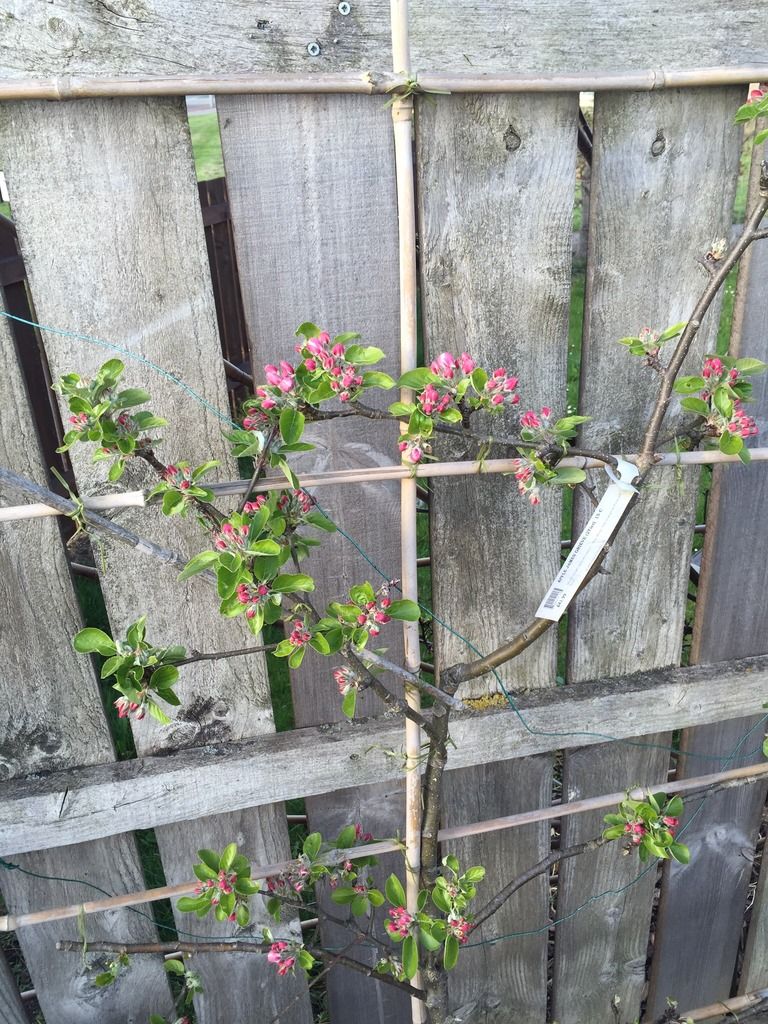We've got a sunny, fairly sheltered corner of the garden (sort of south-west-west facing) that backs onto 6ft fence and is laid to lawn in front. To the left is a shallow border of lavender and in the corner we've got a very pretty white hibiscus. The border that gets the sun from mid morning until late evening in summer has been bare for 2-3 years and we've been thinking about putting in some espalier trees.
A few years ago the neighbours painted their fence and we've had to look at dark green dribbles down what would have been a very smart-looking fence. We don't really want to start with the upkeep of painting the fence on our side, so we thought about plant-based cover instead!
Ideally I'd like the espalier trees to be productive as well as dribble-covering, but my other half isn't too worried as it's on the flowers rather than veg side of our plot. He's also said he would like something that produces pink blossom (quince?) as we have so much white cherry, apple, sloe and damson blossom in the garden (who'd have thought).
Our biggest challenge is that next door also have espalier trees on their side of the fence... but they barely get any direct sunlight so the trees have been very slow growing. They're only just peeping over the top of the fence.
Would it be too much competition for water/nutrients to put in espalier trees on our side too? Our soil is pretty sandy (we're near the GreenSand Ridge in Bedfordshire) and well draining, especially in this corner of our garden and I don't want to have to keep mulching every year. If espaliers aren't suitable, then we'll think of something else.
Any thoughts or recommendations?
A few years ago the neighbours painted their fence and we've had to look at dark green dribbles down what would have been a very smart-looking fence. We don't really want to start with the upkeep of painting the fence on our side, so we thought about plant-based cover instead!
Ideally I'd like the espalier trees to be productive as well as dribble-covering, but my other half isn't too worried as it's on the flowers rather than veg side of our plot. He's also said he would like something that produces pink blossom (quince?) as we have so much white cherry, apple, sloe and damson blossom in the garden (who'd have thought).
Our biggest challenge is that next door also have espalier trees on their side of the fence... but they barely get any direct sunlight so the trees have been very slow growing. They're only just peeping over the top of the fence.
Would it be too much competition for water/nutrients to put in espalier trees on our side too? Our soil is pretty sandy (we're near the GreenSand Ridge in Bedfordshire) and well draining, especially in this corner of our garden and I don't want to have to keep mulching every year. If espaliers aren't suitable, then we'll think of something else.
Any thoughts or recommendations?





Comment